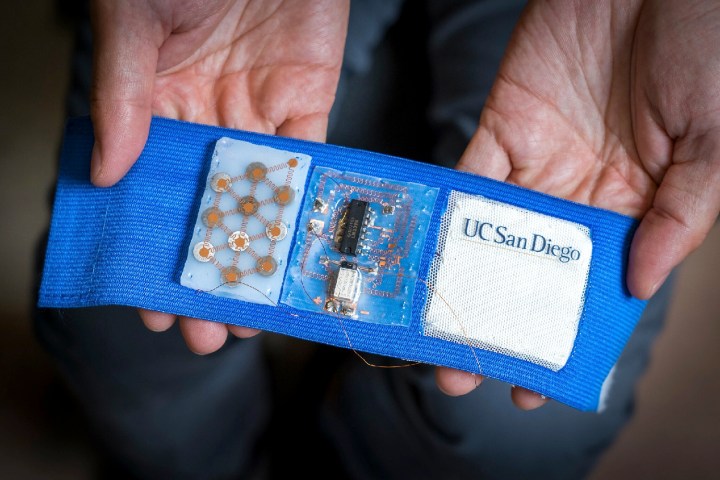
Cranking the AC or putting on and taking off additional layers of clothing isn’t always the most practical or convenient way of regulating your body temperature. Wouldn’t things be easier if you could just use smart wearable technology to solve the problem for you? A new research project developed by engineers at the University of California, San Diego, aims to help.
They have developed wearable tech which could be embedded into future clothing, thereby keeping you the perfect temperature and also saving you on the overuse of air conditioning and heating. The technology sounds similar to the pulsed Embr cooling patch originally developed by a team of researchers at the Massachusetts Institute of Technology. Unlike that device, however, the UC San Diego cooling and heating patch aims to be applied far more broadly to entire items of clothing — meaning that your whole wardrobe could be used for better temperature control.
“You can basically consider it as air-conditioning clothes,” Renkun Chen, a professor in the Department of Mechanical and Aerospace Engineering, told Digital Trends. “It uses the well-known thermoelectric effect to pump the heat using electricity. While thermoelectric devices have been around for a long time, we have developed new strategies to make them flexible and wearable, and are suitable to pump body heat without additional fan or heat sink. Unlike traditional cooling jackets that typically use water or ice, our devices are completely solid state, lightweight, and can precisely control the temperature.”
The patch is made of special thermoelectric alloys, which are sandwiched in between stretchable elastomer sheets. In tests involving an armband prototype, the engineers demonstrated that their tech could cool down skin temperature within a couple of minutes and then keep it within roughly the same temperature parameters. Because the goal is to use it to develop smart clothing, the patches were designed to be able to stretch, bend and twist without suffering damage or compromising their cooling and heating functions. It is powered by a similarly flexible battery pack, made up of an array of coin cells connected by copper wires embedded in a stretchy material. It additionally features a stretchable circuit board.
“The devices are also particularly useful for people with health conditions that are prone to overheating, [such as] multiple sclerosis, and for people engaged in certain occupations or activities, such as construction workers, athletes in certain sports, and other outdoor activities,” Chen continued.
A paper describing the research was recently published in the journal Science Advances. Chen said that the team is actively “working on commercialization efforts.”


